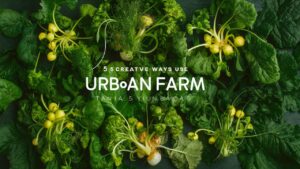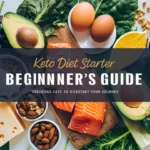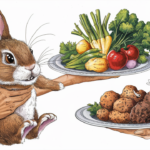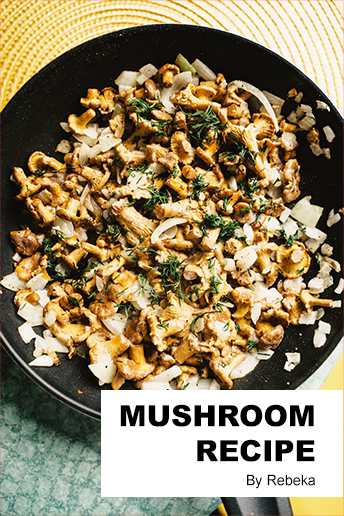- 7 Benefits of drying foods for preservation
- FAQ
- 7 Benefits of Drying Food Preservation Method FAQs
- What is meant by drying food preservation method?
- How does drying preserve food?
- What are the advantages of using the drying method for food preservation?
- What types of food can be preserved through drying?
- Are there different methods of drying food?
- How does drying food compare to other preservation methods like canning or pickling?
- Can the drying process prevent food poisoning?
- Conclusion
7 Benefits of drying foods for preservation
Drying food removes moisture so bacteria can’t grow. Low heat and air flow dry the food. This method helps food last longer, from 4 to 12 months. They can then be eaten well past the harvest or purchase date.
Dry food keeps its nutrients better than canned or frozen food. The vitamins, minerals, and enzymes stay, making it still healthy after drying.
Drying saves space. No need for big cans or bulky bags. Dry food is light and compact, perfect for home or trips. It’s a smart choice for campers and hikers.
By removing all water, dried food doesn’t spoil easily. This means less risk of getting sick from it.
There are many ways to dry food, each with its own benefits. In a bit, we’ll talk about some ways to dry food and what makes each special.
Key Takeaways
- Drying food extends its shelf life, allowing for long-term storage.
- Dried foods keep more nutrients than canned or frozen food.
- Drying food saves space.
- Dried food is less likely to spoil or cause food poisoning.
Image: Dried fruits and vegetables showcase the benefits of food drying.
Methods of Drying Food
Drying food is a tried and true method of preserving it. There are various ways to dry food, each with its benefits depending on what you’re drying and your goal.
Dehydrators are the top choice for many. They use heat from electric elements and air from fans to dry food evenly. Dried food usually has less than 2.5% water, but it’s different for dehydrated food or food dried naturally. Fruits, veggies, meats, and herbs all dry well this way.
Oven drying is also common. It takes more time and energy than dehydrators. Food is placed in a cool oven to let moisture escape. This method requires watching so food doesn’t dry out too much or burn.
Sun drying works well in warm, arid places. It’s a traditional method where food is laid out in the sun. Yet, high humidity areas should avoid this. Sun-dried food usually keeps about 15% moisture.
Air drying happens indoors with good airflow. Usually used for herbs, hot peppers, and mushrooms. It’s slow, but it conserves energy and gives great results.
Microwave drying is fast and good for herbs and some leafy greens. But, it can change how some food tastes and feels. Microwaves dry food quickly because of their high frequencies.
| Drying Method | Advantages | Limitations |
|---|---|---|
| Dehydrators | Uniform drying, retained food quality | Requires an electric appliance |
| Oven drying | Accessible method, no additional equipment required | Longer drying time, requires careful monitoring |
| Sun drying | No energy required, traditional method | Dependent on weather conditions, not suitable for high humidity areas |
| Air drying | Energy-efficient, suitable for certain foods | Requires well-ventilated indoor space |
| Microwave drying | Quick drying process | May affect taste and texture of some foods |
Choosing the right drying method is crucial. It depends on the type of food, what qualities you want, and how well it can handle heat. Knowing these factors helps pick the best method for the best results.
References:
- Statistical data extracted from Link 1.
- Statistical data extracted from Link 2.
How to Dry Food Safely
Drying food safely is key to keeping it for later. You need to think about low humidity, mild heat, moving air, and other steps. These help food stay safe and tasty after drying.
It’s key to keep the air dry for drying to work well. Did you know, 70 percent of germs stop growing when you boil or chill food? Cooling food slows germs by not giving them the warm environment they need. But, fruits and veggies need some heat and air to dry right. Using tools like dehydrators or ovens, make sure the heat is low so the food doesn’t cook instead of drying.
For safe drying, ready your food beforehand. Quick-boiling veggies (blanching) stops harmful enzymes. And, loveleries like fruits can be soaked in lemon juice or acid-water to prevent darkening before drying.
Keep an eye on the drying progress. Veggies should be crispy and easy to break, while fruits might be soft but not sticky. The right drying time and temperature ensure the food is dry enough without burning.
Proper storage once food is dried is a must. Put your dried goodies in airtight glass, metal, or strong plastic containers. And, check on them sometimes for any signs of moisture or mold to keep them fresh.
To sum up, to dry food the right way, think about the air, the process, and care after drying. With proper steps, you can keep enjoying your favorite foods year-round.
FAQ
7 Benefits of Drying Food Preservation Method FAQs
What is meant by drying food preservation method?
Drying food preservation method is a process where food is preserved by removing water from it through dehydration, thereby extending its shelf life.
How does drying preserve food?
Drying preserves food by reducing the moisture content, which inhibits microbial growth and prevents food spoilage.
What are the advantages of using the drying method for food preservation?
The advantages of drying as a food preservation method include maintaining nutritional value, extending the shelf life, and preserving the natural flavors of foods.
What types of food can be preserved through drying?
Drying is suitable for fruits, vegetables, meats, and herbs, as it effectively removes water from a variety of food items for long-term preservation.
Are there different methods of drying food?
Yes, there are various drying methods such as sun drying, air drying, dehydrators, freeze-drying, and home drying techniques that can be used for preserving food.
How does drying food compare to other preservation methods like canning or pickling?
Drying food offers the benefit of preserving food without the need for refrigeration, unlike canning or pickling, and also helps in retaining the nutritional value of the food.
Can the drying process prevent food poisoning?
By removing water and inhibiting the growth of microorganisms, the drying
Conclusion
Drying foods makes them last longer. This method is excellent for saving food and reducing waste. It stops bacteria and mold from growing, keeping the food fresh. Also, dried foods keep their nutrients, making them a healthy choice.
There are many ways to dry food, like using a dehydrator or the oven. These are simple for anyone to do at home. Dried foods are also easier to store since they’re small and light.
In the food industry, different ways are used to keep food safe. Drying, salting, and fermentation are natural methods. But, some foods also use chemicals to last longer. A mix of these helps food stay good for a long time.


 Canning vs freezing - preserving methods compared
Canning vs freezing - preserving methods compared Top 10 Unforgettable Seaside Fish and Chips Spots You Must Try
Top 10 Unforgettable Seaside Fish and Chips Spots You Must Try








